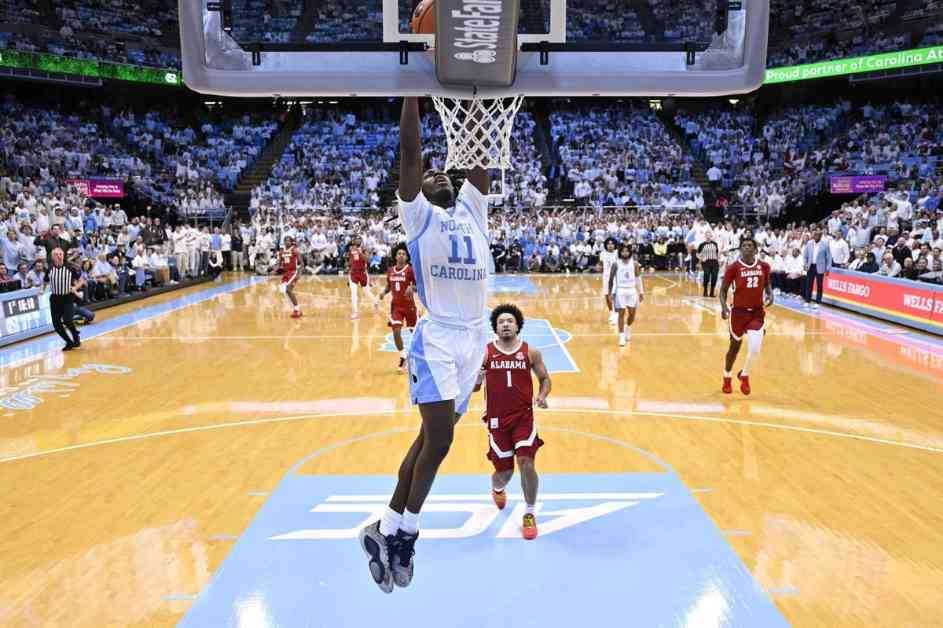North Carolina’s Secretive Exploration of ACC Conference Realignment
North Carolina has been quietly allocating over $600,000 toward legal expenses for a confidential project known only by the code name “the Carolina Blue matter.” Recent revelations from documents obtained by The Athletic shed light on UNC’s behind-the-scenes journey into exploring conference realignment within the ACC. This covert initiative commenced in September 2022, amidst a tumultuous period in ACC history marked by significant changes in conference alignment, legal disputes, and financial instability.
Behind Closed Doors: Unveiling UNC’s Conference Realignment
The engagement was prompted by external events, such as Texas and Oklahoma’s decision to join the SEC and the Big Ten’s addition of USC and UCLA. Against this backdrop, North Carolina embarked on a strategic legal endeavor that extended through at least November 2024. This period coincided with pivotal moments within the ACC, including lawsuits brought forth by Clemson and Florida State challenging the conference’s binding contracts and financial viability. Internal communications obtained by The Athletic revealed a sense of urgency among top UNC officials, with one expressing the necessity to explore all options to navigate a conference facing financial decline.
The genesis of North Carolina’s exploration can be traced back to the retention of Skadden, Arps, Slate, Meagher & Flom LLP, an out-of-state law firm specializing in athletic commercial matters. The documents highlighted vague agreements and escalating costs associated with the Carolina Blue matter, underscoring the complexity and significance of UNC’s legal undertaking. Despite the substantial financial commitment, the exact nature of the Carolina Blue matter remained shrouded in mystery, with legal representatives and university officials maintaining a veil of confidentiality.
Decoding the Carolina Blue Matter: UNC’s Realignment Strategy
Insider accounts from two senior UNC officials, speaking on condition of anonymity, affirmed the core focus of the Carolina Blue matter as a strategic examination of conference realignment possibilities. This endeavor was portrayed as a proactive measure to navigate the shifting landscape of collegiate athletics rather than an aggressive legal maneuver. Notably, a significant portion of the incurred expenses, amounting to $310,000, was attributed to legal work conducted during a critical period in 2024 that witnessed escalated realignment activities and legal disputes within the ACC.
Amidst these developments, an email exchange between UNC Board of Trustees members shed light on the university’s financial concerns and strategic outlook. Discussions emphasized the importance of safeguarding UNC’s interests in a challenging conference environment characterized by financial disparities and administrative tensions. The exchange underscored the university’s readiness to explore alternative conference affiliations to ensure its long-term financial stability and competitive standing in collegiate athletics.
The evolving narrative surrounding North Carolina’s realignment deliberations paints a picture of a university grappling with complex decisions against a backdrop of uncertainty and change. UNC’s status as a premier academic and athletic institution lends a unique perspective to its exploration of conference realignment, positioning it as a potential wildcard in the evolving landscape of collegiate sports. As the ACC navigates its future and resolves internal disputes, the role of institutions like UNC remains pivotal in shaping the conference’s trajectory and competitive dynamics.
In conclusion, North Carolina’s foray into conference realignment underscores the multifaceted nature of collegiate athletics, where financial considerations, legal strategies, and institutional priorities converge to define the future landscape of collegiate sports. As UNC continues its exploration of realignment options, the broader implications for the ACC and collegiate athletics as a whole remain a subject of ongoing speculation and strategic maneuvering. The intricate dance between legal, financial, and competitive interests within the realm of conference realignment reflects a dynamic and ever-evolving landscape that promises to reshape the future of collegiate sports.












